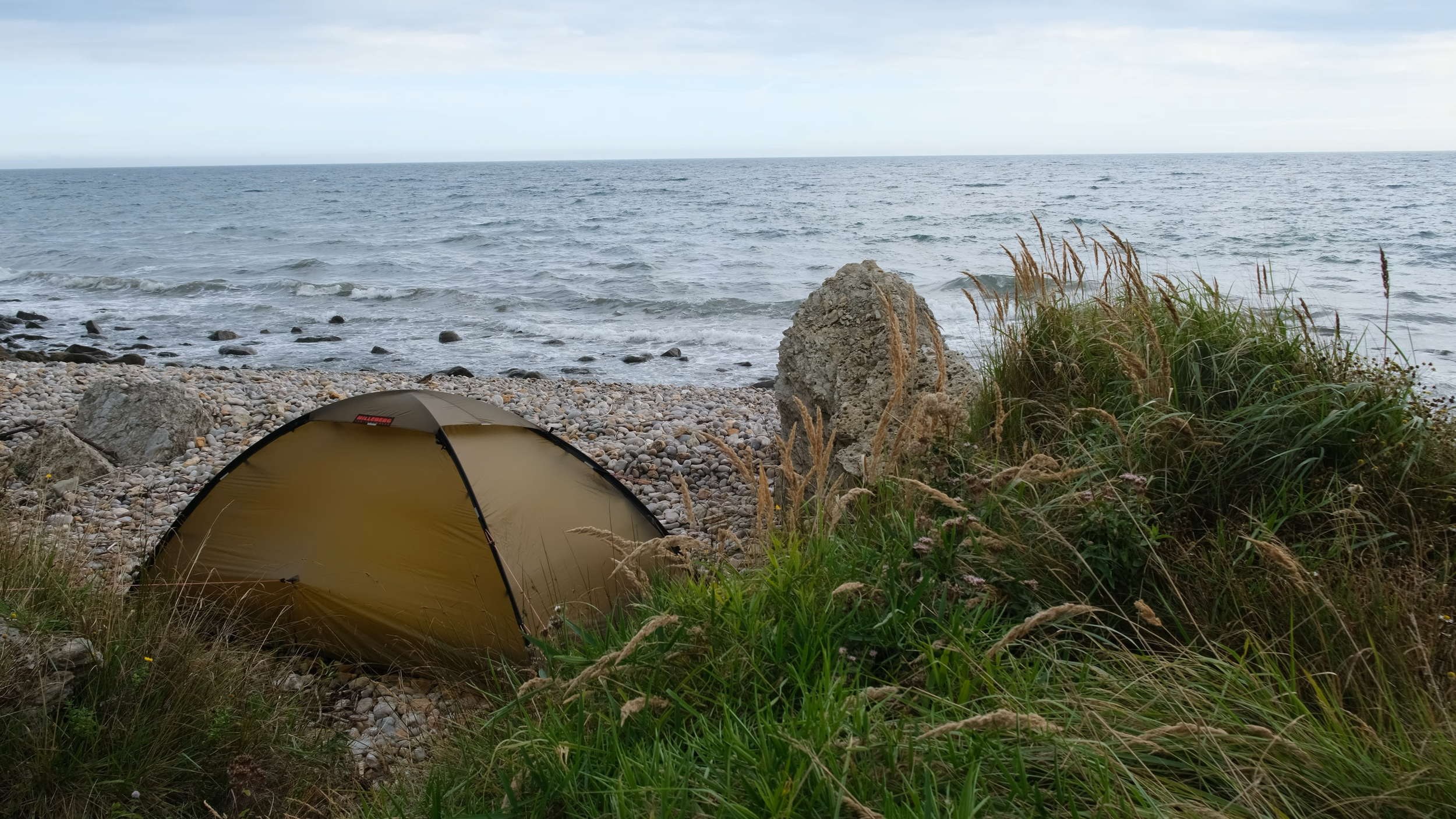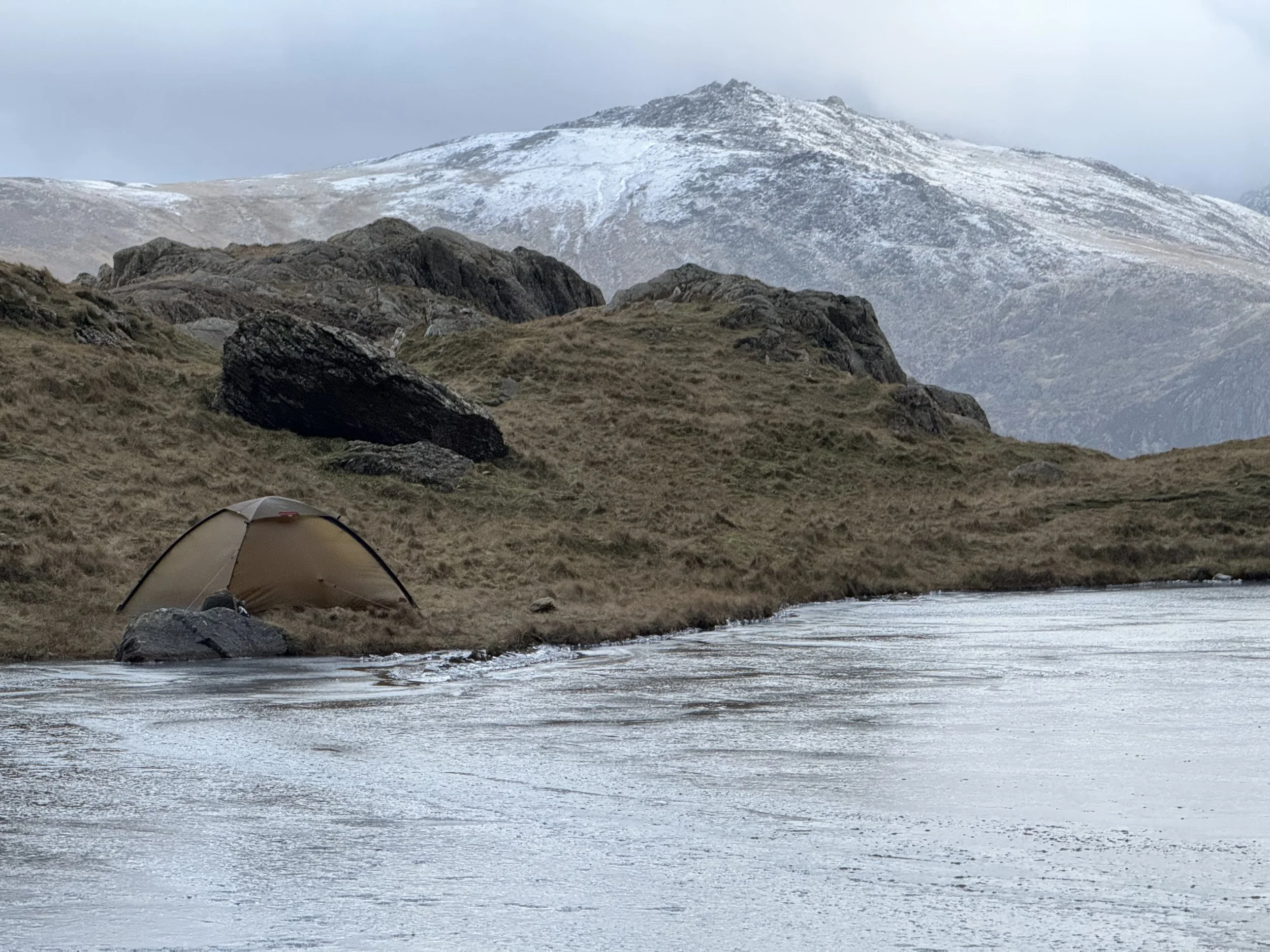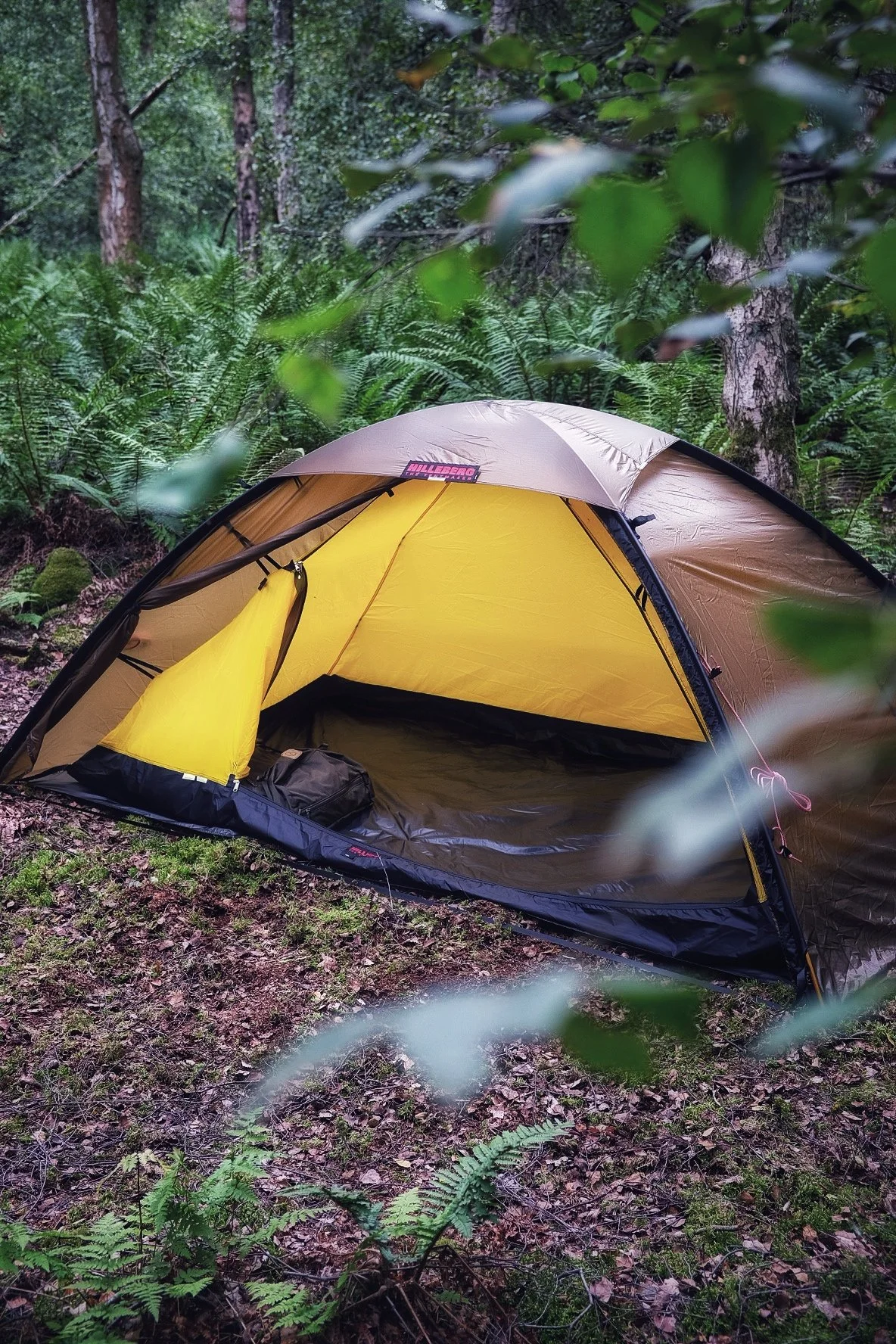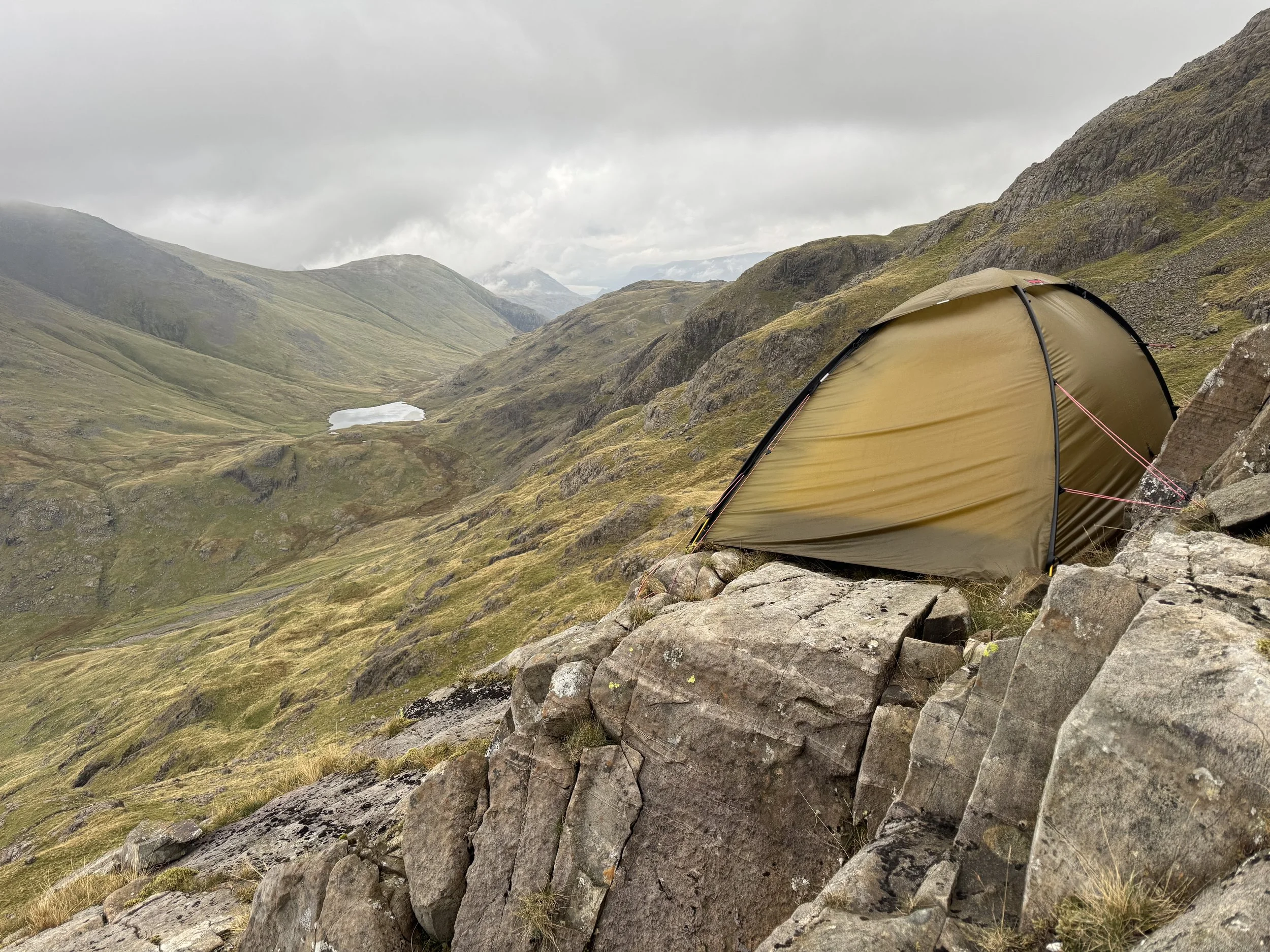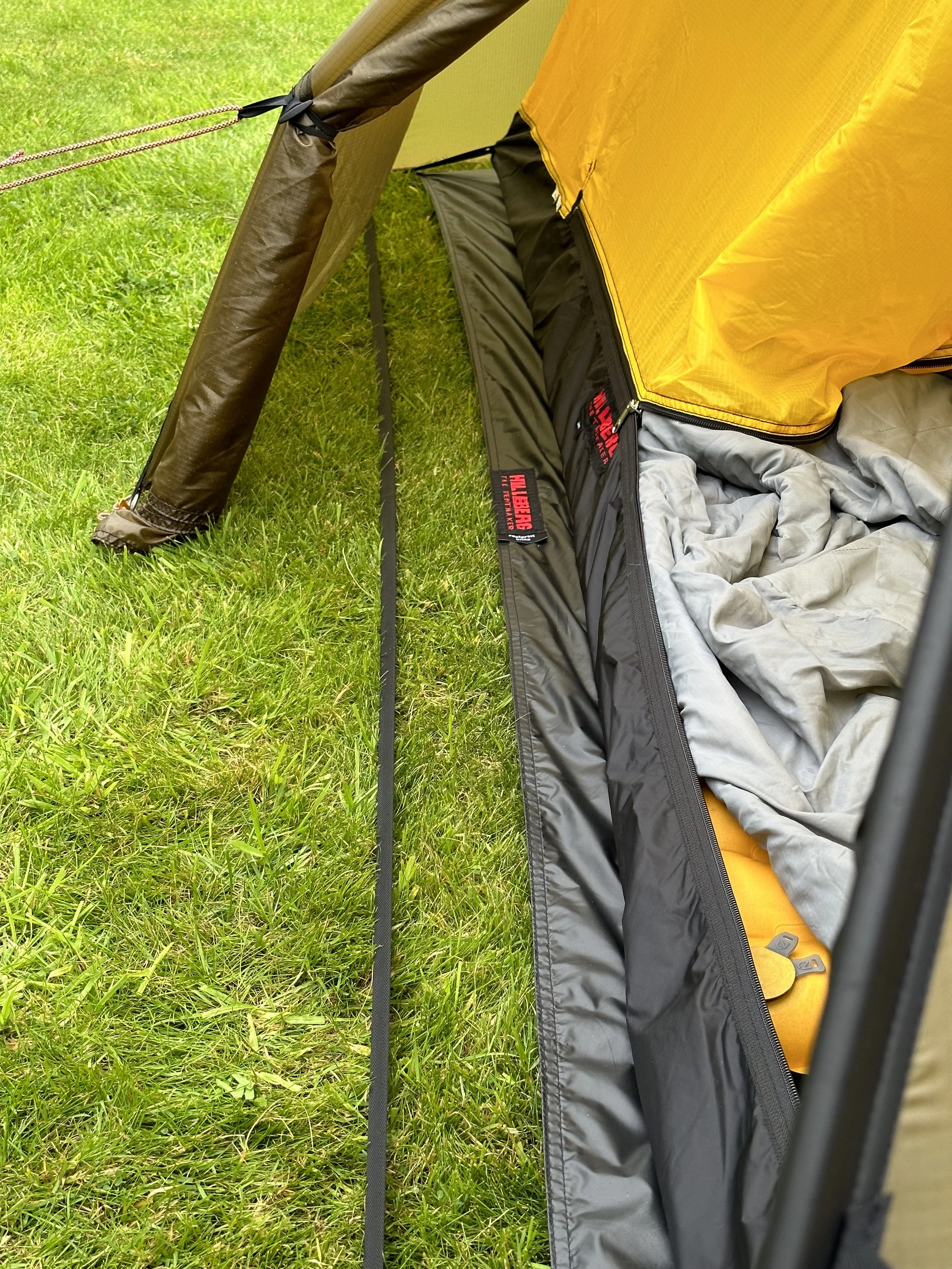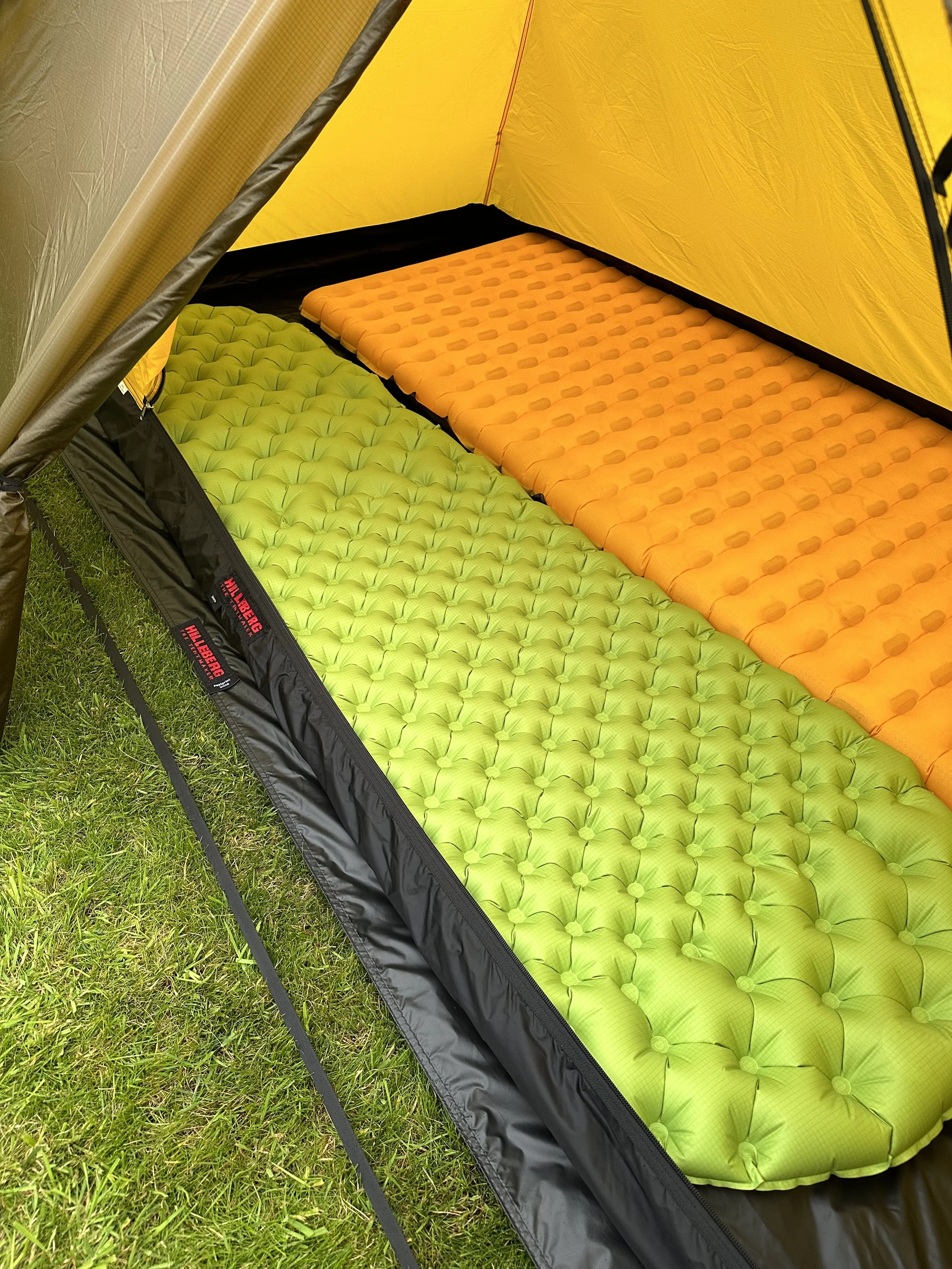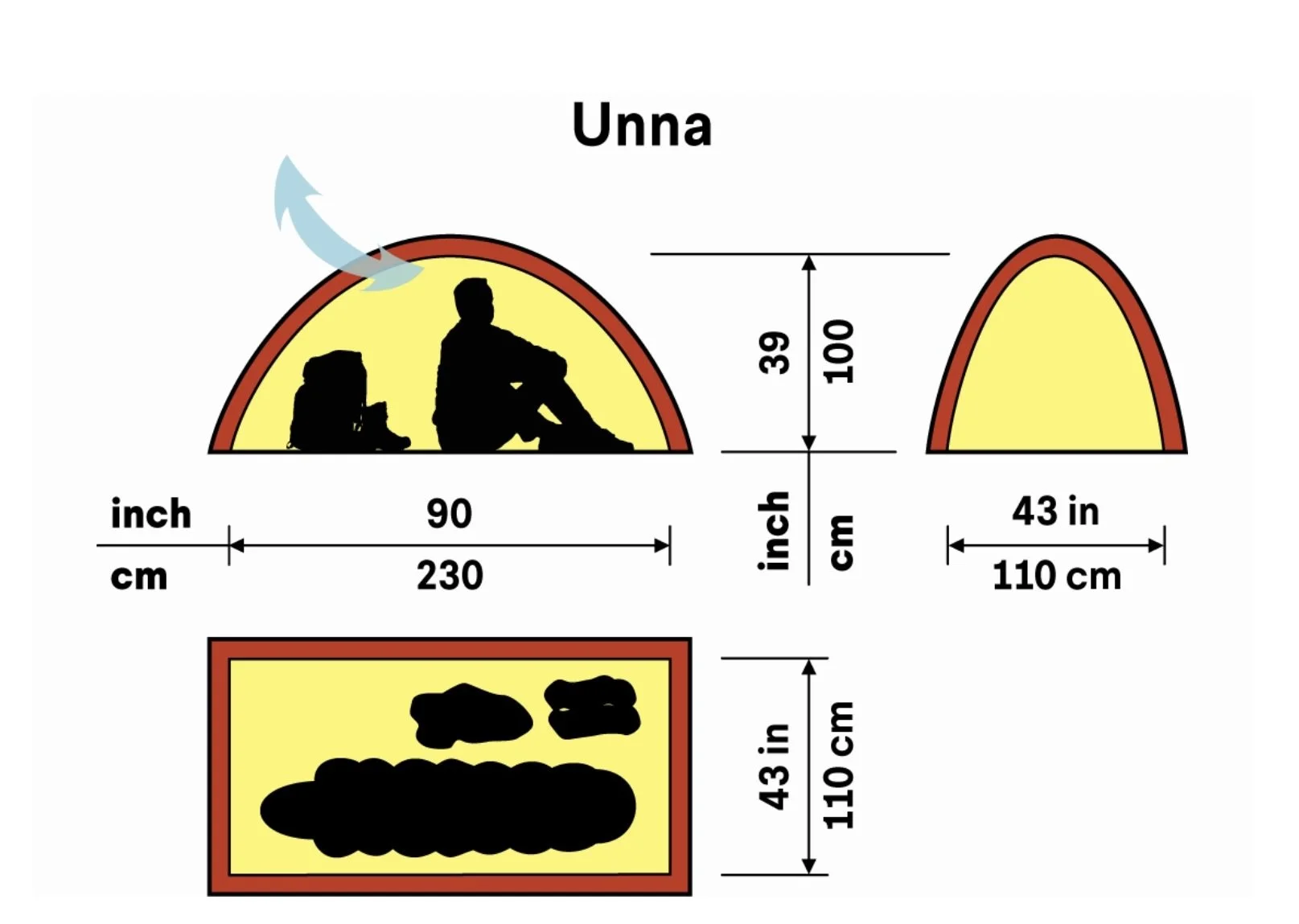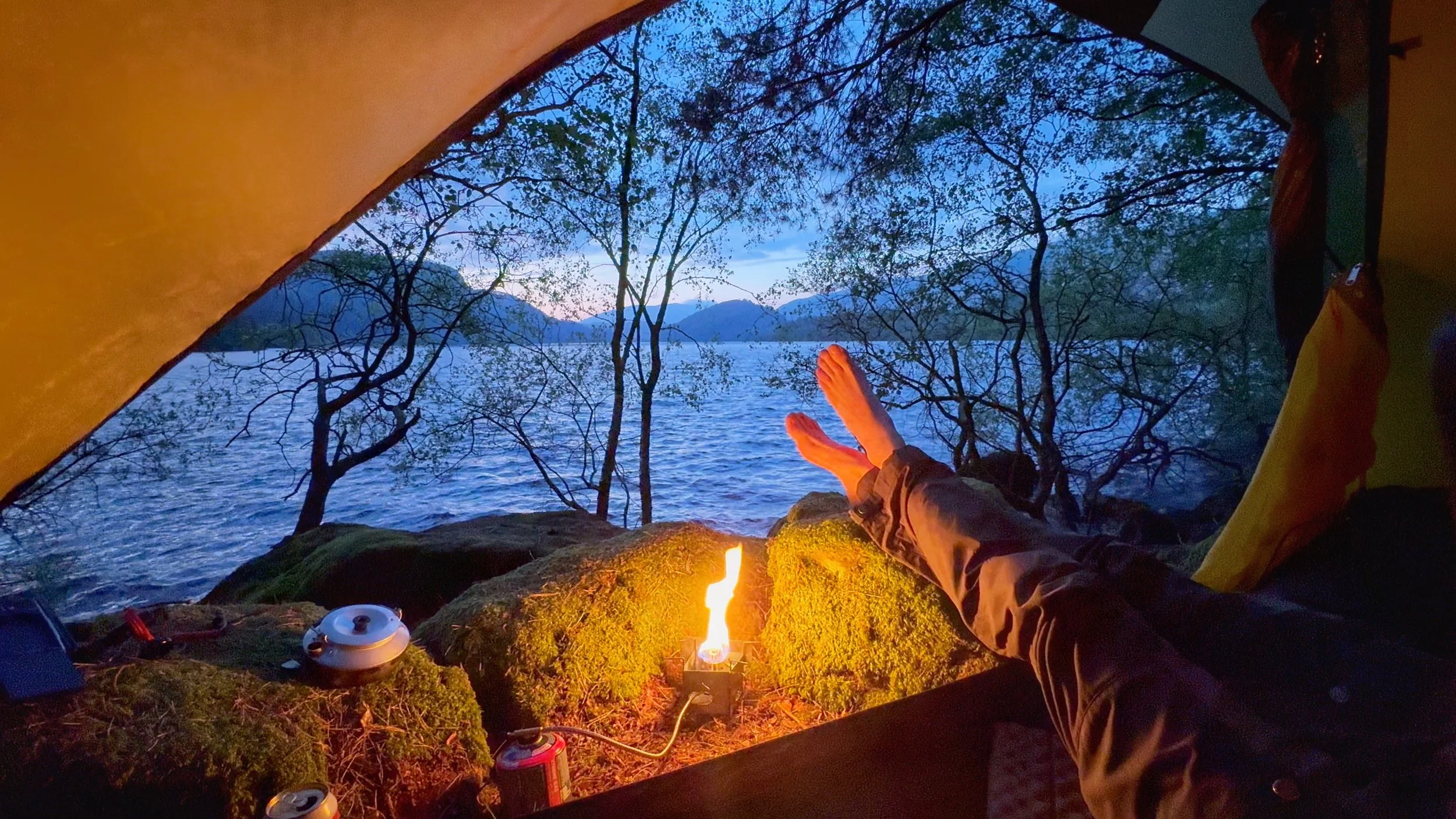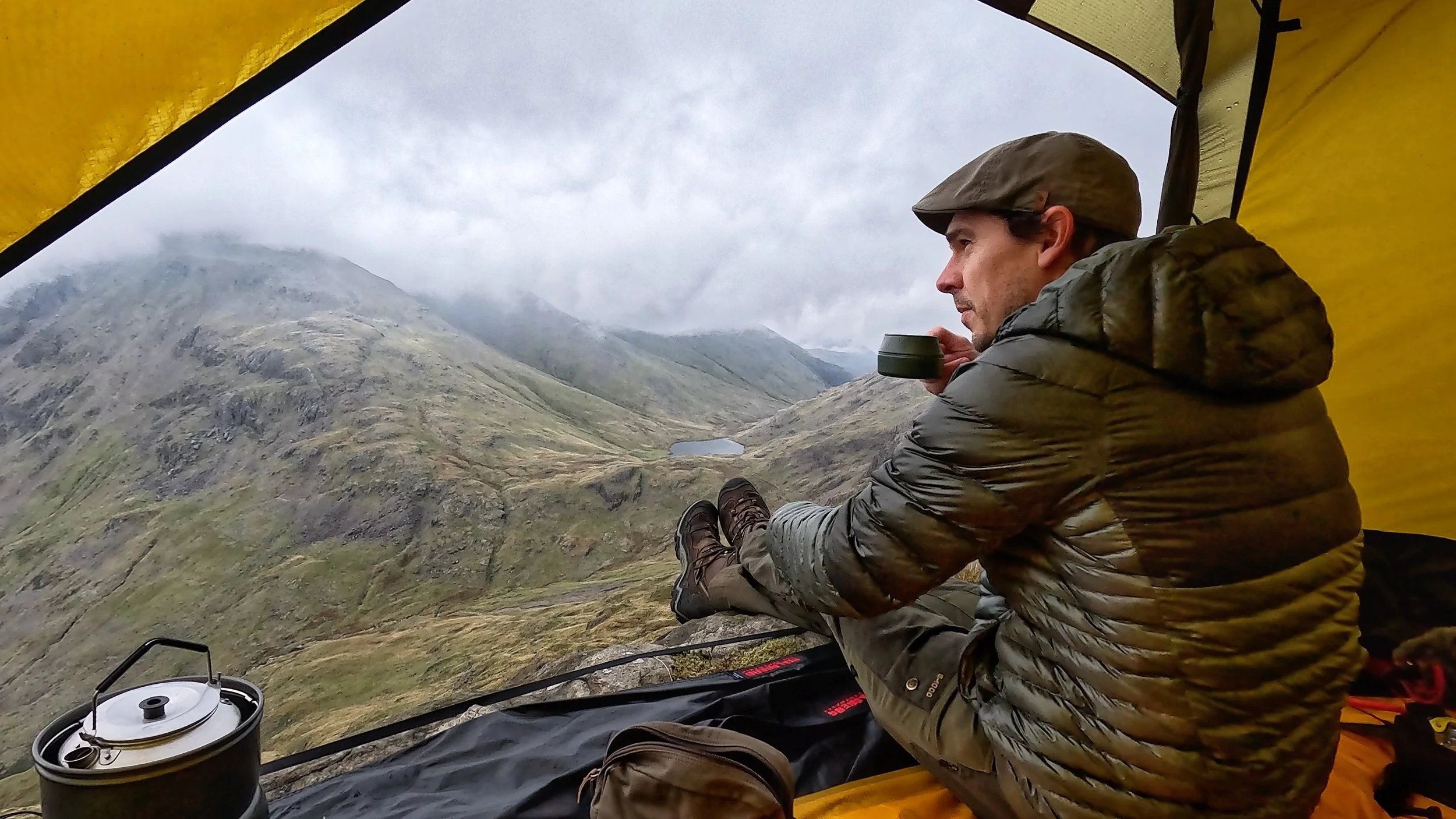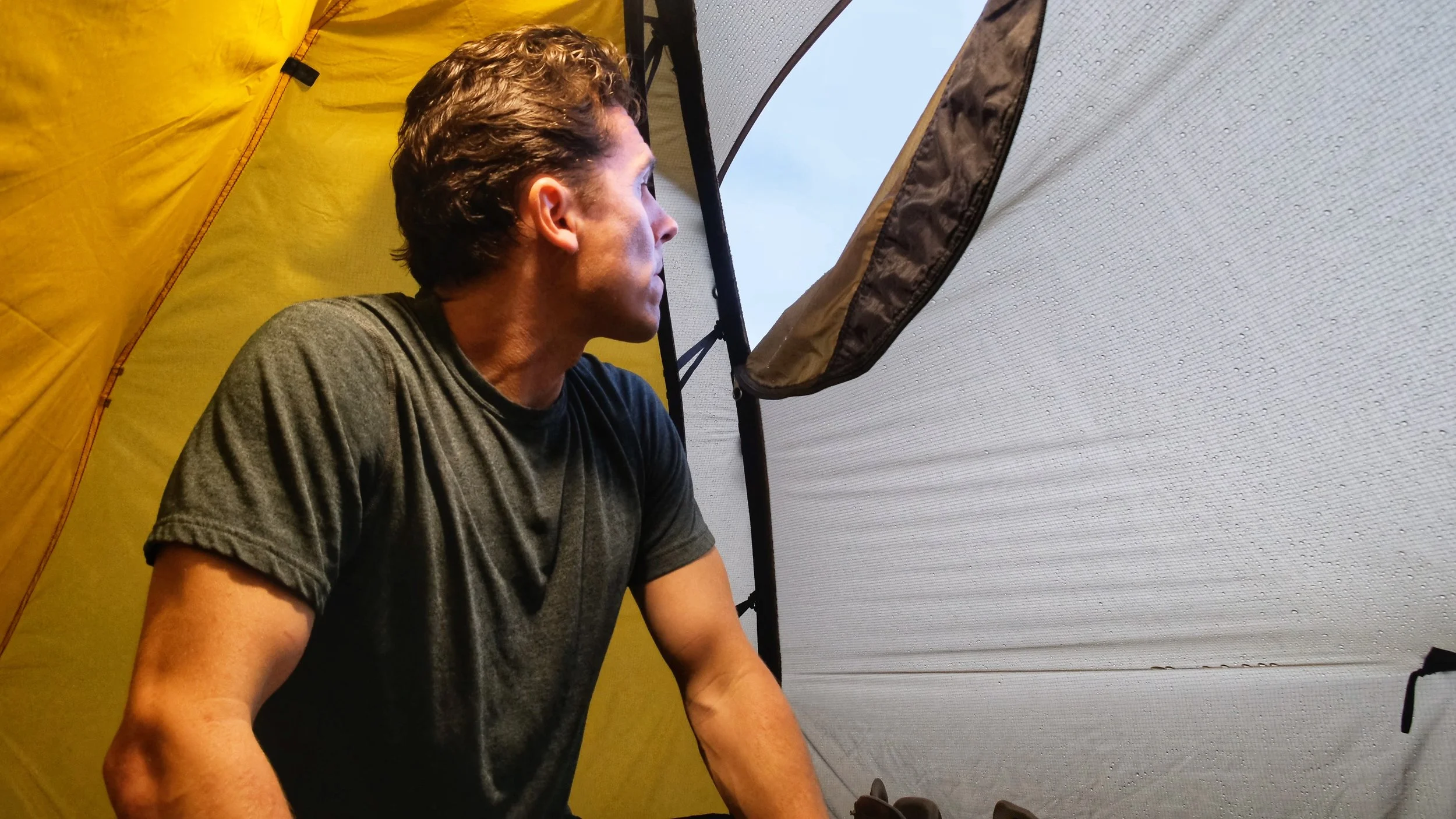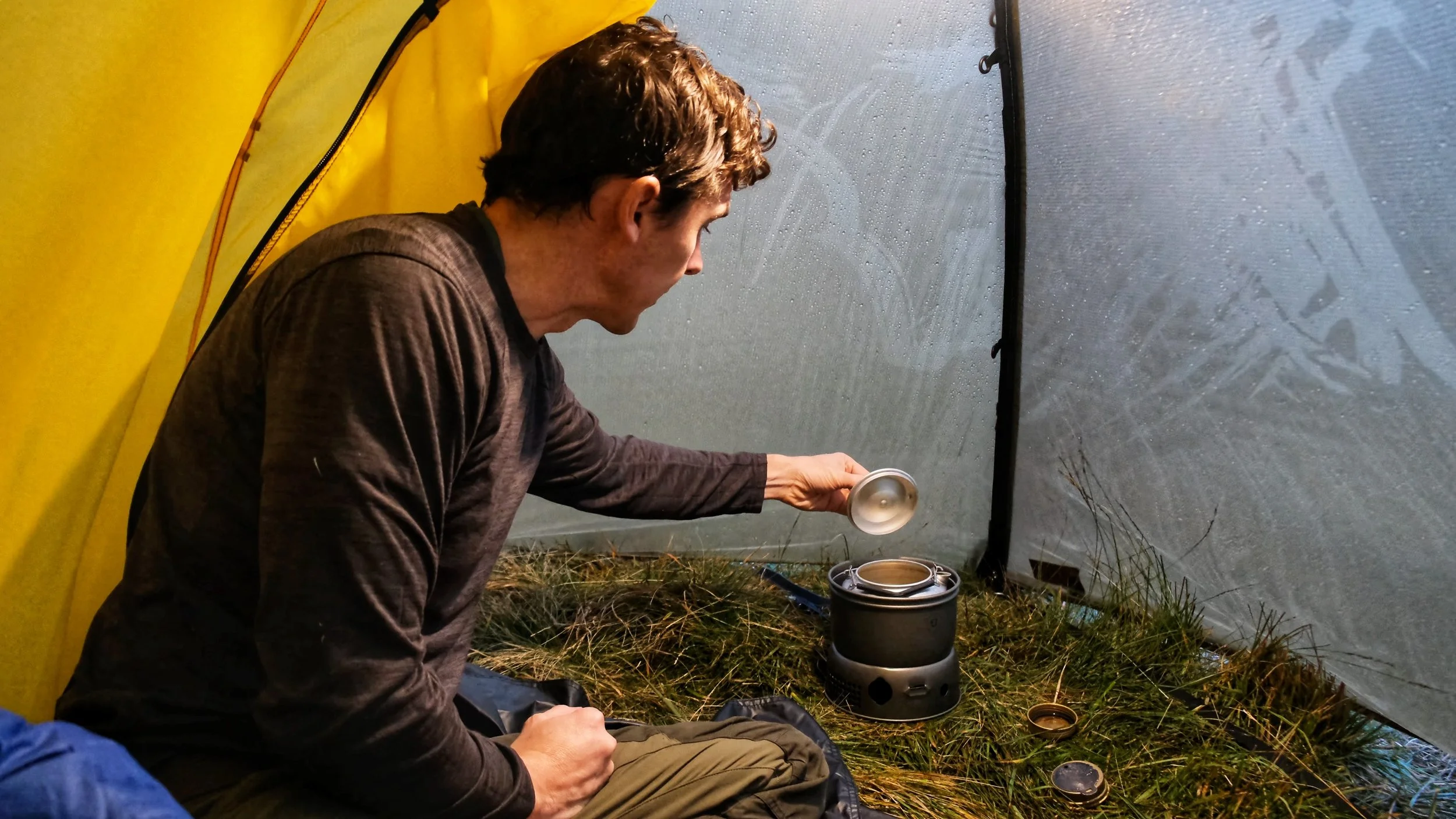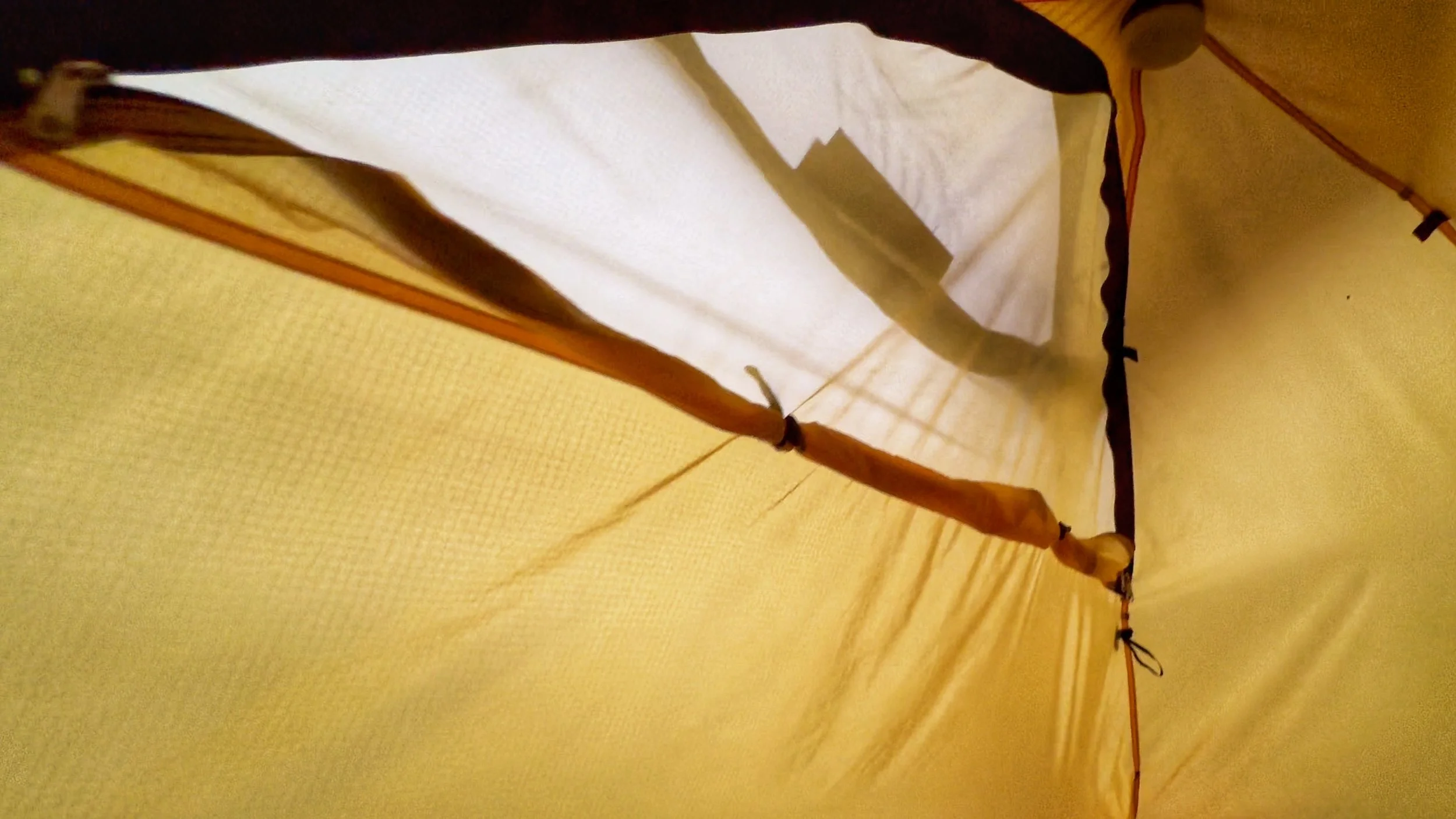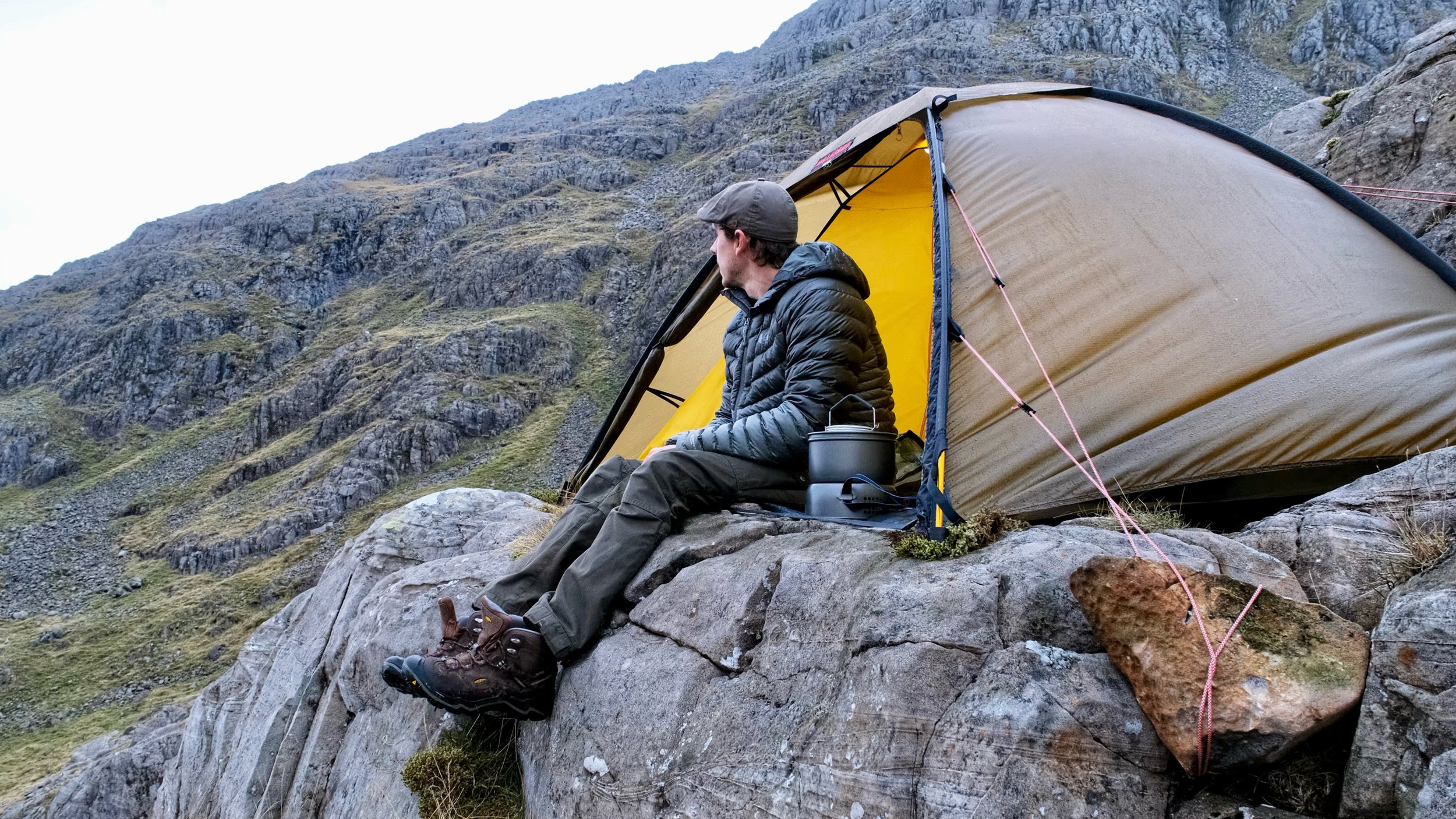
Hilleberg Unna: A Minimalist Solo Expedition Tent
Introduction:
The Hilleberg Unna is a spacious four-season, freestanding solo tent designed for adventurers who prioritize simplicity, durability, and all-weather reliability. Unlike many solo tents, it offers a spacious interior with ample space to sleep and store your gear, without the need for a dedicated vestibule. The simple two-pole design allows for the tent to be fully pitched without the need for guy lines or stakes (although this is still advised), making it a versatile option for setup in nearly any environment, whether alpine, rocky beach, dense forest, or in snowy conditions. But is it worth the investment? Let’s break it down.
Specifications
• Type: 4-season, 1-person freestanding dome tent
• Weight: 2.3 kg (5 lbs 1 oz) packed
• Inner Tent Dimensions: 230 cm (90.5 in) long, 110 cm (43.3 in) wide, 100 cm (39 in) high
• Packed Size: 14 x 46 cm (5.5 x 18 in)
• Doors: 1
• Vestibules: None (gear stored inside the tent)
Materials:
• Outer Tent: Kerlon 1200 (30D ripstop nylon, silicone-coated both sides)
• Inner Tent: 30D ripstop nylon (DWR treated), 70D triple-coated polyurethane floor
• Poles: DAC Featherlite NSL 9mm aluminum
⸻
Performance Breakdown
1. Weather Resistance – 9/10
The Kerlon 1200 fabric is incredibly tough, boasting a 12 kg/26.5 lbs tear strength with a 5000 mm hydrostatic head rating, making it far stronger and waterproof than most standard lightweight backpacking tents. The cross sleeved, 9mm DAC poles are very reliable and provide excellent stability against strong winds and heavy snowfall. You can even opt to double pole the tent or purchase a set of 10mm DAC poles, which would further enhance the tent's strength.
Since the Unna is a freestanding dome, it performs well in rocky terrain, snow, and high-altitude conditions where staking can sometimes be difficult. Wherever you decide to pitch the tent, the full-coverage rainfly ensures that rain and snow won’t get inside. While the two pole design, may not be as rock solid in strong winds as Hillebergs other very popular single man tent, the Soulo, which has 3 crossing 9mm poles. The Unna is more than capable of handling most conditions you will face on your adventures.
Pros:
• Exceptionally strong for a solo tent, with the ability to double pole or upgrade to a 10mm pole set.
• Freestanding (No need for stakes in rocky or snowy terrain. This is still advised)
• Handles high winds and heavy rain/snow with ease
Cons:
• With a very large front and back panel the Unna is not as aerodynamic as the Hilleberg Soulo so pitching either side into the wind is advised.
• No dedicated vestibule, which means there is less space for wet gear or getting in/out of the tent in rainy conditions unless you unclip the inner tent (this is very easy to do just not always as convenient)
2. Ease of Setup – 10/10
The Unna’s two-pole crossover design allows for fast, easy setup in all conditions. Just slide each pole into its pole sleeve, tighten it down and you’re basically done! It is also best practice that you take the time to stake out each of the guy lines, however the tent is fully pitched after just inserting and tightening the two poles, it’s that simple. Because it’s freestanding, you don’t always need to worry about finding soft ground to stake out the ends of the tent, making it much easier to pitch the tent in any environment. With the relatively compact rectangular footprint, this tent can be pitched in places where other single-man tents may not easily fit. Like on a narrow rock ledge or the rocky shore of an island. (see pictures or my YouTube videos)
Pros:
• Freestanding – can be pitched anywhere
• Single Pitch Design. Both the Inner tent, footprint (sold separately) and the fly are all connected, so everything can be setup or taken down simultaneously. This is great in when it is raining or snowing!
• Can be fully pitched and guyed in 3 minutes (that’s my record at least)
Cons:
• Not as easy to setup in windy conditions as tents with external poles that are clipped to the outer fly (I did not remove any points because it is actually quicker with pole sleeves and still very easy to do you. It may just require some practice)
3. Space & Comfort – 9/10
In a market where numerous tent manufacturers label their products as 2-person tents despite offering only 40-inches of width, Hilleberg takes a different approach by only modestly representing the size of this one-person tent. This is a prime example of underselling, while exceeding expectations. For a solo tent, the Unna is surprisingly spacious. With a width of 110 cm (43.3 in) and length of 230 cm (90.5 in), it has enough room for a large wide sleeping pad and gear storage. In fact, there is even enough space to accommodate both a wide and a standard pad inside the tent, even if the measurements do not appear to support this (see pictures of a camp I did with my son). Some solo tents can feel cramped, but the Unna’s high ceiling (100 cm / 39.4 inches) allows for comfortable sitting and space to move around.
Probably the biggest turnoff to many tent buyers who are in the market for a one man tent might be the Unna’s lack of a dedicated vestibule. Meaning, you might not have a space to store wet gear or place your dirty shoes at the end of the day. This is an understandable concern, and was actually one of the main reasons I chose to purchase the Hilleberg Soulo over the Unna many years ago. However, despite Hilleberg’s claim that there is no vestibule in this tent, I would respectfully disagree. When utilizing the center guy out points on the large front door panel, there is sufficient enough space to easily store wet boots or clothing. I have even been able to store my 45L pack on its side in the vestibule alongside other gear.(see pictures).
So what about cooking? It’s never a great idea to cook in your tent, but often when faced with high winds or rain you may have no choice. This is where the lack of a vestibule might be very inconvenient. However, it’s in these circumstances that you can take advantage of the virtual vestibule. By simply unclipping the inner tent from one of the corners you can easily pull back the inner and create a very large safe area to boil water or even cook yourself a proper meal (take a look at one of my YouTube videos!). This is also great when it’s raining outside and you want to get into the tent and change out of your wet clothing while still keeping the inner tent dry. This is one of the reason why I have the footprint permanently attached. This allows me to entirely remove the inner tent but still have a dry space to sit without being on the wet ground.
Pros:
• Very roomy for a solo tent – can easily fit a large wide pad and gear inside
• High ceiling allows for comfortable sitting and movement
• Wide enough to accommodate a second person in an emergency or a loved one (my son and I have used this as a two man tent)
Cons:
• No vestibule – can be inconvenient in wet conditions but there are options with the virtual vestibule
4. Ventilation – 9/10 (without the optional mesh inner)
The Unna features a large adjustable roof vent and a mesh inner section towards the top of the inner tent door, which can be opened and closed with a separate zip. This helps reduce condensation and can be adjusted to fine tune airflow. I have even left this top section completely open in good weather resulting in absolutely no condensation on the inner fly of the tent. However, I would appreciate it if the duel solid/mesh inner section could be extended to cover the entire door of the inner tent, similar to what is featured in other Hilleberg models, such as the Nallo and Nammatj 2. This adjustment to the current inner tent design would add extra weight but it would also allow for even greater airflow resulting in a much more comfortable experience during the warmer months. By fully rolling back the outer fly and only exposing the mesh section of the door, users will be able to extend the tent's usability into the summer months in areas with hot, humid summers. Additionally, this modification would eliminate the need for purchasing the expensive mesh inner tent.
The Kerlon 1200 rainfly sits close to the ground, providing excellent protection from wind and rain but does limit airflow. You can however lift and secure a portion of the fly at both the front and back of the tent to enhance airflow at the tent's base. This is a feature I have not seen in any of my other Hilleberg tents and is great for providing additional airflow throughout the tent. Although this tent may not be the most suitable option for a tropical climate, I have only experienced it being slightly warm during one exceptionally hot summer camp here the UK. Overall, I have found this tent to be quite comfortable across all seasons in the UK climate and have never experience condensation within the inner tent. However, as previously mentioned, it may not be the most suitable option for camping in hot and humid environments, unless you are planning on purchasing the mesh inner tent.
Pros:
• Roof vent and Solid/Mesh-lined inner tent vent allows for fine tuned ventilation.
• Two sections of the bottom outer fly can be lifted and secured to allow for greater airflow at the base of the tent.
Cons:
• Can get stuffy in warm, humid climates
• Wish the mesh section of the inner tent door was larger as it is in some of the other Hilleberg models. This would however increase the weight of the tent.
5. Durability, Materials & Build Quality – 10/10
True to Hilleberg's reputation, the Unna is exceptionally well built. The Kerlon 1200 fabric surpasses the strength of many four-season tents within its weight category, while the 9mm DAC poles provide outstanding structural support, ensuring durability for years of use. All Hilleberg tents are handcrafted by a single individual from beginning to end in their factory in Estonia. Each tent includes a tag bearing the name of the person who made it, adding a personal touch to the product. When well maintained, a Hilleberg tent can serve a user for many years. This durability undoubtedly contributes to their remarkable resale value. For instance, I sold a 6-year-old Hilleberg Soulo RL and nearly recovered the full purchase price to buy the newer BL version. So although the initial price may appear high, if you ever decided to sell the tent, your actual overall expense owning the tent might be relatively low for a dependable, well-constructed shelter.
Pros:
• Incredibly durable materials for long-term use
• High-quality zippers, seams, and reinforcements
Cons:
• Expensive, but you’re paying for premium quality
⸻
Who Is the Unna For?
✅ Solo mountaineers & alpine climbers – Handles harsh weather and rocky terrain without needing stakes. Guy lines can always be secured in clever ways to properly anchor your tent.
✅ Winter campers – Strong enough for snow and wind, yet compact for solo use.
✅ Bikepackers & paddlers – Spacious, but freestanding design is perfect for tight campsites in nearly any location.
✅ Minimalist backpackers – Lightweight for a 4-season tent without feeling cramped.
Not Ideal For:
❌ Backpackers needing a large dedicated vestibule – No separate large area for gear storage.
❌ Hot weather campers – Limited ventilation in humid conditions without purchasing a separate mesh inner tent. Depending on where you live, you may not be able to use this tent in the summer.
⸻
Final Verdict – 9.4/10
The Hilleberg Unna is a minimalist top-tier, freestanding solo tent built for adventurers who need a storm worthy yet lightweight four-season shelter. Its quick setup, extreme durability, and freestanding design make it perfect for off-grid exploration in nearly any environment.
If you need a minimal yet spacious solo tent that is easy to pitch and can handle extreme environments, the Hilleberg Unna is one of the best options available and is currently one of my favorite tents of all time.
Want to see how the Unna handles strong winds (67 mph) with different pole and guy line options? See Hilleberg’s video below!
Even though Hilberg claims the Unna does not have a vestibule, I would argue that it does. Although it's small, there is actually enough space to easily fit your boots, a cook kit, or even an empty backpack when placed on its side. However, there is still more than enough room to store all your gear inside the tent with you! But this space is great for any dirty or wet gear.
A room with a view! One of my favorite features of the Unna is the ability to open the entire side of the tent. This design lets you fully immerse yourself in your surroundings while still enjoying the comforts of your tent. Even when raining, the top vent can be opened, allowing you to take in the view while staying dry inside the tent.
Although the Unna is classified as a one-person tent, it can accommodate two pads, allowing it to function as a two-person tent. Shown is a standard wide 25-inch pad alongside a regular 20-inch mummy pad. This is great for a parent and child.
If you need more space, just quickly unclip three of the inner tent attachment points and you have a massive space for cooking or getting changed out of wet gear. Here I am getting my morning coffee ready while still sitting dry in the inner tent.
At the front and back of the tent, you can roll and secure the base fabric to the panel tie-out points, enhancing airflow at the bottom of the tent.
The solid/mesh inner section at the top of the inner tent offers plenty of ventilation for summer use here in the UK; however, it would be beneficial if this section were extended to encompass the entire door of the inner tent. This enhancement would significantly improve ventilation in hot or humid conditions, potentially eliminating the need to invest in a separate mesh inner tent. Of course, this would come with a weight penalty.
